Top 7 Most Beautiful Historical Sites in Suriname
Suriname, is an irresistible country with diversity, hidden gems, tropical paradises, unspoiled wonders, and friendly, hospitable people. From Paramaribo's ... read more...incredible markets to the secluded forests of Palumeu, the country is a true fusion of cultures, offering a variety of familiar culinary flavors tourists be looking for. found halfway around the world. And then, at other times, the food was a mix of cultures, resulting in a unique dish of this world. But perhaps many tourists do not really know much about the history of this country. Because of that special, today Toplist wants to introduce to readers the 7 Most Beautiful Historical Sites in Suriname.
-
Visit Fort Zeelandia, a former fort that has been transformed into a museum, to learn more about Suriname's history.
The building belonged to British settlers and was known as "Fort Willoughby" until 1667 when it was conquered by the Dutch and renamed after the Dutch province of Zeeland. View the structures that have seen warfare, enslavement, and the 1982 "December Murders." A history museum and a café serving delectable regional cuisine are now located inside Fort Zeelandia.
On behalf of Francis Willoughby, the governor of Barbados, Major Anthony Rowse founded the little Dutch colony of Surinam in 1650. The abandoned French fort, known as Fort Willoughby by the English, was strengthened in 1651 and was located close to modern-day Paramaribo. As the British ammunition ran out, the Dutch Admiral Abraham Crijnssen captured Paramaribo in 1667 from forces led by Lieutenant-Governor William Byam in a fight that lasted about three hours. Essequibo-Pomeroon Colony was also retaken by Crijnssen. The Surinamese fort was renamed Zeelandia by Crijnssen. It began to lose its usefulness as a military tool over time, and in 1772 there were even proposals to demolish Fort Zeelandia.
Fort Zeelandia was the site of the "December killings" of 1982 and was used to jail and torture political prisoners after Suriname gained its independence in 1975 and throughout Dési Bouterse's military rule in the 1980s. In addition, Fort Zeelandia is home to the Surinamese Museum. Ethnographic artifacts are widely represented in the museum. Archaeology, visual arts, colonial furniture, textiles, and old photographs are all included in its collections and the old commander's home is now the Nola Hatterman Art Academy.
Fort Zeelandia is open Monday to Sunday from 9 a.m to 2 m and Tuesday, Thursday, and Saturday are closed. Therefore, visitors need to arrange a reasonable time to fully experience one of the Most Beautiful Historical Sites in Suriname.
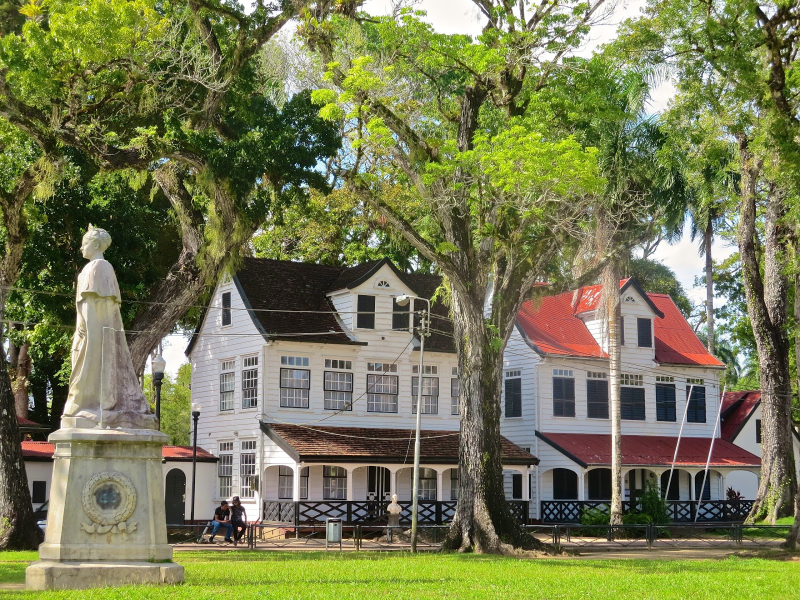
Photo: www.inspirock.com Video: CatchingFilm -
Visit Saint Peter and Paul Basilica, which was recently elevated to the status of a basilica, to see the biggest wooden edifice in the Western Hemisphere. In the heart of Suriname's main city, Paramaribo stands the wooden Roman Catholic church known as the Cathedral-Basilica of Saints Peter and Paul, commonly known as Saint Peter and Paul Basilica.
Originally, the city's Catholic community worshiped in a church that had been converted from a Dutch Jewish theater constructed in 1809 to 1826. Particularly, De Verrezene Phoenix, a former Dutch Jewish theater constructed in 1809, was converted into a church in 1826 by the Roman Catholic Church of Paramaribo. The church grew too tiny as the years went by to accommodate the city's expanding Catholic population. The diocese made the decision to construct the cathedral in 1882. Although Saint Peter and Paul Basilica were dedicated in 1885, the towers were not finished until 1901. In spite of a subpar renovation that was finished in 1977, the structure started to tilt and have termite issues. The cathedral was restored to its functional condition in 2002 after major renovations. Formal repair of the cathedral began in 2007 with money from the European Union, and three years later, on November 13, 2010, the church reopened. In 2014, Pope Francis named the cathedral a minor basilica.
The biggest wooden building in the Western Hemisphere is Saint Peter and Paul Basilica. There are two confessionals in the cathedral. Inside, tourists can see three different-sized bells in the tower, a burial for the Dutch-Surinamese priest Peter Donders, who cared for lepers in Batavia, as well as elaborate woodwork and decorations.
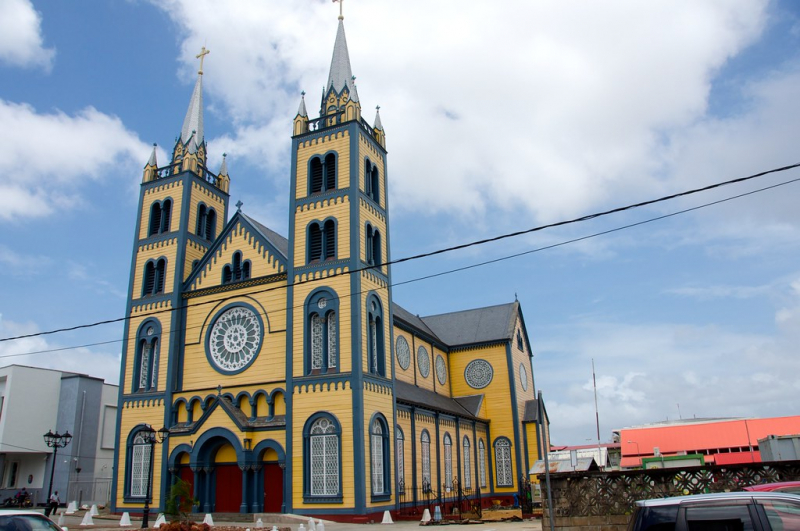
Photo: flickr.com Video: ArtShots Video Producties -
The Mosque Keizerstraat, also known as Suriname City Mosque, is a brilliant example of the country's pervasive religious peace. It is located in 88 Zwartenhovenbrug Straat Nassylaan, Paramaribo, Suriname.
Mosque Keizerstraat is renowned for its central dome, rectangular design, and four tall minarets. It was originally built out of wood and reconstructed in the 1980s to replace an older wooden construction. The Mosque Keizerstraat, which serves as the spiritual center for Muslims in Suriname, is most remarkable not for its architecture or design but rather for sharing a parking space with the city's sole Neveh Shalom synagogue.
Mosque Keizerstraat is now a magnificent landmark in the heart of the city, with soaring minarets and glittering domes. The mosque, which appears beautiful from the outside, gladly welcomes guests all day long. The Lahore Ahmadiyya Movement for the Propagation of Islam has its headquarters at the mosque. Famous people have visited this magnificent landmark, including boxing great Muhammad Ali.
This mosque in Paramaribo, which goes by the straightforward name of Mosque Keizerstraat, is a magnificent piece of art and gleams amid gardens, bordered by fences depicting Islamic motifs. Therefore, it deserves to be one of the Most Beautiful Historical Sites in Suriname that tourists must experience once in life.
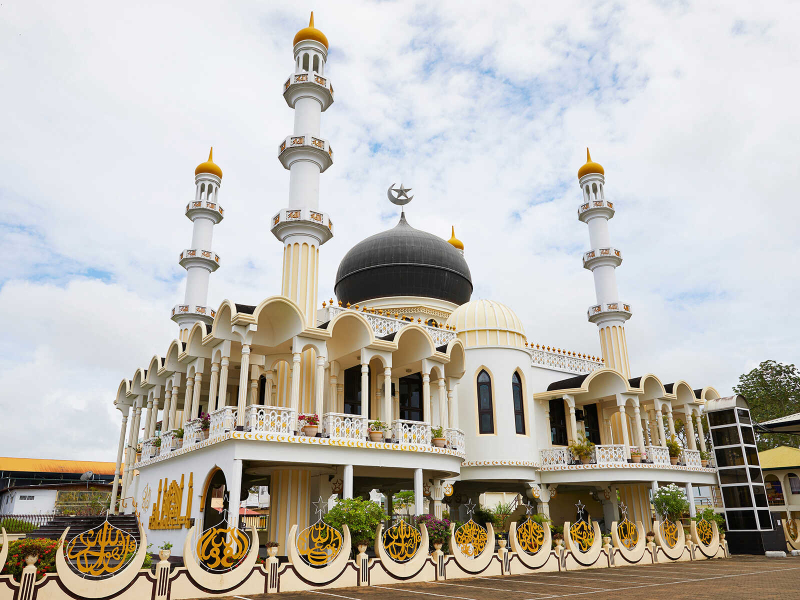
Photo: mustseespots.com Video: Jun from Somewhere East -
On the northeastern coast of tropical South America, there is a former Dutch colonial town called Paramaribo that dates back to the 17th and 18th centuries. The plain and symmetrical architectural style, which is predominately made up of wooden buildings and illustrates the gradual fusion of Dutch and other European architectural styles, later North American influences, as well as elements from Creole culture, reflects the multi-cultural Suriname society.
The Sommelsdijk Creek and the Viottekreek form the northern and southern boundaries of the Historic Inner City of Paramaribo which is situated on the left bank of the Suriname River.
The Historic Inner City of Paramaribo was constructed in 1683 on a grid pattern along an axis that runs northwest from Fort Zeelandia, the main streets run along scalloped ledges, providing a natural drainage facility for the building. Dutch town planning and building expertise allowed the Historic Inner City of Paramaribo to grow on marshes to the north in the late 18th century. Fort Zeelandia, which was established in 1667, is a significant landmark in the townscape. It is situated behind a sizable public park called the Garden of Palms, which is close to open areas and streets with plenty of trees. Furthermore, the Ministry of Finance (1841), a massive brick building with a clock tower and classical dome, the Reformed Church (1837) designed in the Neoclassical style, and the Roman Catholic Gothic Renaissance-style Presidential Palace (1730) all have wooden upper floors. Wood was also used to construct the Gothic Revival Roman Catholic Cathedral in 1885.
The increasing blending of European architectural and building methods with native South American materials and crafts to produce a new architectural idiom is particularly evident in Paramaribo. In the years of intense colonization of this region in the 16th and 17th centuries, the Historic Inner City of Paramaribo is a singular example of the interface between the European culture of the Netherlands and the indigenous cultures and environment of South America.
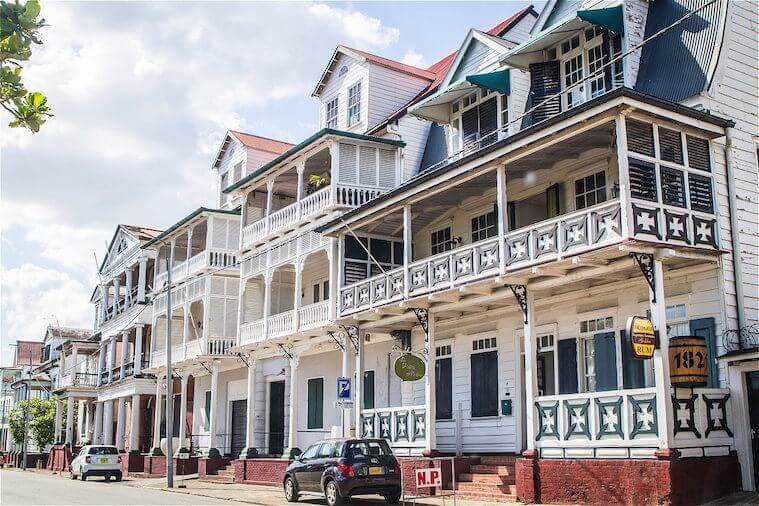
Photo: allaboutworldheritage.com Video: BE with Suriname -
Neveh Shalom Jewish Synagogue is the only synagogue of the Ashkenazi community of Suriname.
After Sephardi Jews purchased the land on Keizerstraat 82 in 1716, the initial building was finished there in 1723. The earliest synagogue in Suriname was situated in the Jodensavanne and was first constructed out of wood between 1665 and 1671, however, it was already rebuilt with bricks then.
The Neveh Shalom Jewish Synagogue was once used by both the Ashkenazim and Sephardim populations. In 1735, the Sephardim established Tzedek ve-Shalom as a separate community when the Neveh Shalom Jewish Synagogue was sold to the Ashkenazim. The two groups joined in the 1990s, and they now hold services in different locations with different rituals.
Construction of the present Neveh Shalom Jewish Synagogue, which occupies the Keizerstraat 82 property, began on July 3, 1835, by architect J.F. Halfhide, in the presence of Prince Henry of the Netherlands, and it was finished in 1842.
Neveh Shalom Jewish Synagogue was built for many different purposes. Its primary goal was to preserve a place of worship for God and to disseminate Conservative Judaism's tenets and ideas. The second is to keep a religious school open to teach Jewish children about Judaism, as well as the nation's history and culture. The next aim is to keep cemeteries in good condition for burials and the internment of the deceased. Finally, individuals should have access to additional religious, educational, social, recreational, and associated opportunities that will help to build, sustain, and extend Judaism.
A small museum on Suriname's Jewish heritage is housed in the synagogue. The synagogue is close to the Keizerstraat Mosque. Therefore, it will be very convenient for visitors to come here and experience a tour to explore the religious sites in Suriname.
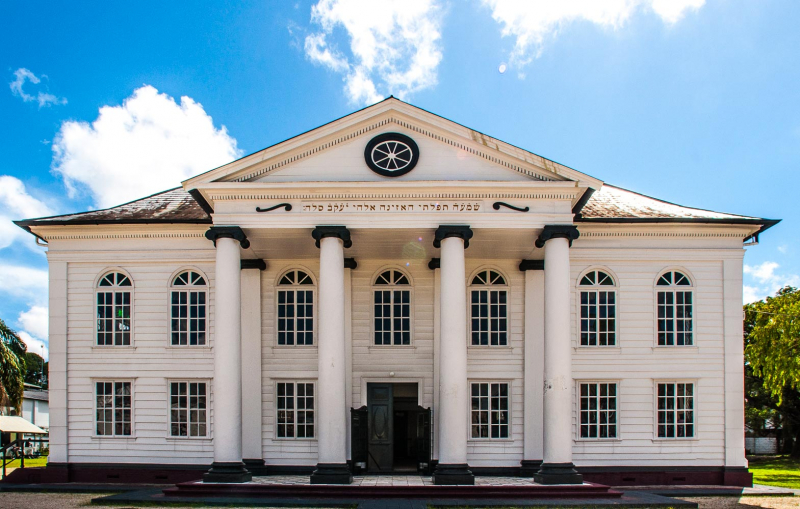
Photo: m.sworld.co.uk Video: François Starita -
The greatest Hindu temple in Suriname was constructed by the Hindu organization Arya Dewaker. Hindus and non-Hindus from Suriname and all around the world frequent the temple in large numbers. It is situated in Paramaribo's central fields. It is appropriate to identify this place of worship as the principal temple for the 16,661 Hindus who are reported to belong to this Hindu reform movement founded by Swami Dayananda Sarasvati because Arya Dewaker is the most significant component of the Arya Samaj in Suriname today (1823-1883).
Pandit Pandit Mehtā Jaimīnī, a Ārya Samājī who had just immigrated from India, took the effort to start Arya Dewaker on September 29, 1929. Arya Dewaker refers to "Aryan Sun." The Dutch colonial government officially recognized the group on February 5, 1930. On February 11, 2001, Arya Dewaker was formally inaugurated.
The group constructed its first temple in 1936, where members were entrusted with calling people together and conducting rituals centered on the Vedic fire that represented Arya Samaj. However, the construction lasted until 1947 when the new temple was officially inaugurated. However, this temple was only built according to normal architecture, nothing outstanding compared to other temples in Aryan. So Arya Dewaker was demolished in 1975 to make way for another temple. However, the construction of this structure took around 20 years because of the significant changes in the original ideas and the financial issues brought on by Suriname's challenging economic climate in the 1980s and 1990s.
Since the Dutch architect Arthur E. de Groot worked closely with the members of the board and the building committee of Arya Dewaker to design an octagonal building with two levels, the new place of worship, which was finished in 2001, varies greatly from earlier Aryan temples. The architect wanted to design a "tropical temple," which would have characteristics similar to Surinamese structures, such as its wide verandas, white-painted checkerboard windows, and enormous eaves. The Moghul period in India and the Moor period in Spain are both vividly reflected in the architecture's shapes and patterns.
Inside, the building's octagonal shape creates the illusion that it is round, reflecting the earth's, moon's, and sun's elliptical shape. The three towers represent the three everlasting elements that make up our universe: the unchangeable God, the human being, and nature. Four refers to the four Vedas, the earliest Hindu scriptures, and is represented by the number four on the tops of the two smaller towers and the tower atop the large dome of the temple. Outside, the first flour is the venue for the ceremonies, in addition to a number of conference rooms and libraries. Benches are arranged in a ring around the fireplace while a fire is lit in the center of the room, highlighting the fact that everyone attending the fire ceremony is equal. The ceiling of Arya Dewaker is covered with white synthetic panels during the 2016–2018 refurbishment.

Photo: en.wikipedia.org Video: ArtShots Video Producties -
The Kwakoe statue is a memorial honoring the end of slavery and is located in Paramaribo, the capital of Suriname, and is created by a sculptor, Jozef Klas. Wednesday is referred to as Kwakoe in the Maroon language of Surinam known as Kromanti. In other words, on Wednesday, July 1, 1863, slavery was abolished. In honor of the 100th anniversary of slavery in Suriname on July 1, 1963, Prime Minister J.A. Pengel unveiled the sculpture on June 30. A freed African slave is shown breaking his own shackles in the monument.
The statue is situated at the intersection of Zwartenhovenbrug Street and Dr. Sophie Redmond Street in Paramaribo, the Surinamese capital, next to the Ondrobon bus station.
There are several statues in Paramaribo, but none of them has ever attained the same level of notoriety as Kwakoe's. Though it has been claimed that Kwakoe would have been the country of Suriname's first black landowner, it does not depict a real character. The Afro-Surinamese soon accepted the monument of Jozef Klas as the finest illustration of their freedom from their past of slavery. Even now, it is frequently given clothing, particularly the Pangi, and headgear. The maroons still cover their shoulders with their vibrant scarves. Meetings, encounters, and manifestations frequently take place at the Kwakoe statue.
A Committee of the Statue of Liberty, a women's organization chaired by Mrs. U. Breeveld-Silos, was established to materialize the statue. She was one of the speakers at the 1963 unveiling. The male chorus "Harmonie" and the youth choir "Evangelische Broedergemeente" gave performances, while florist L. de Gapadose presented a wreath in the Surinamese flag's colors.
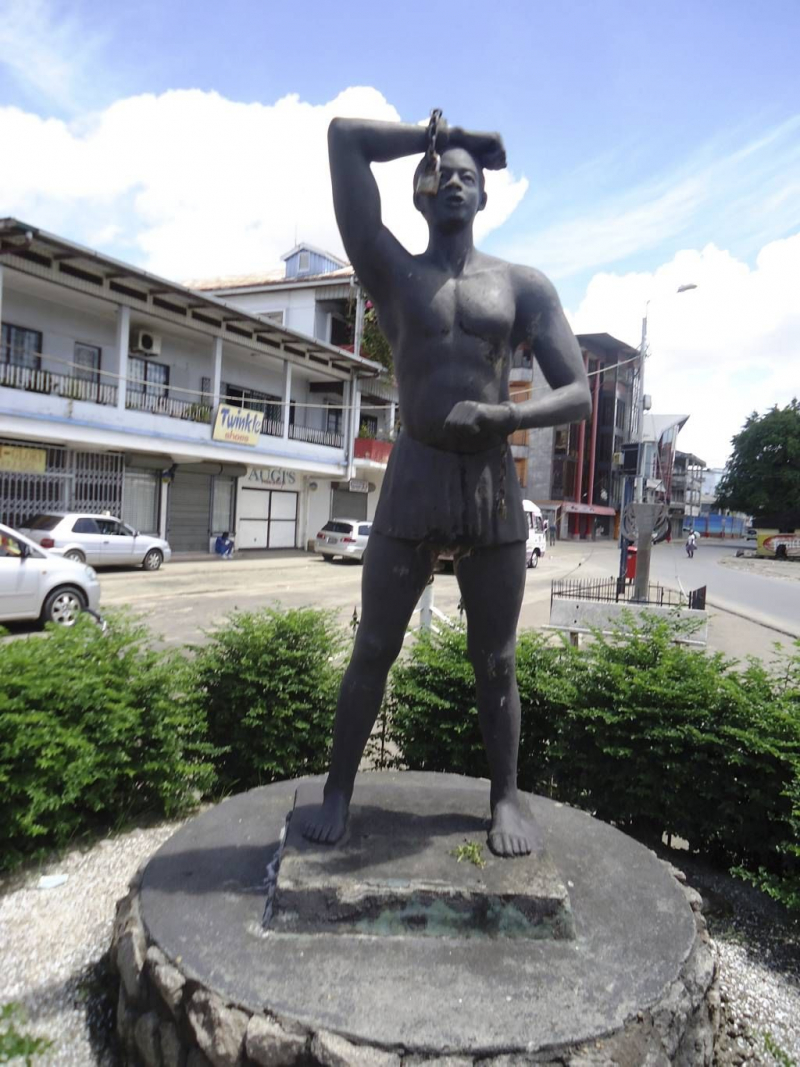
Photo: i.pinimg.com Video: Stichting 1voor12 Suriname




























